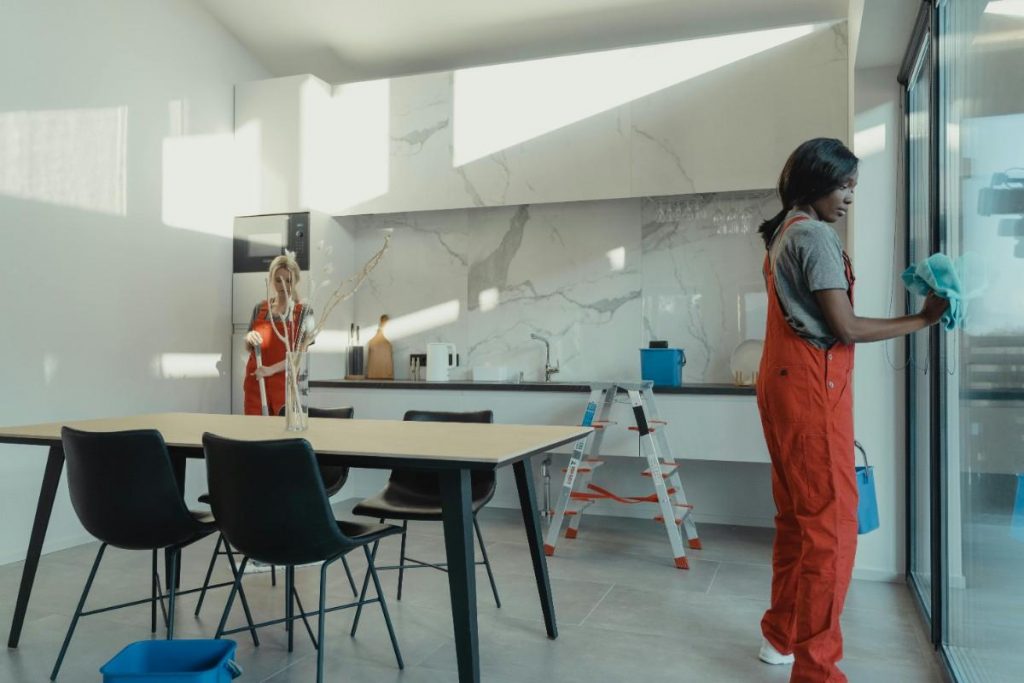
According to the Residential Rental laws in Victoria, the landlord charges the security deposit against the damage or dirty condition of the property. Thus, it is imperative for a tenant to read the lease agreement and know their rights and responsibilities. This will help them maintain a strong tenant-landlord relationship and make the tenancy journey hassle-free.
Unfortunately, most tenants in Melbourne lose their hard-earned bond money as they are unaware of their specific cleaning responsibilities. At the end of a tenancy, every renter should return the property in a reasonably clean condition.
It is also important to cross check the initial condition report, do necessary repairs (except fair wear and tear) and spruce up the property thoroughly to pass the final rental inspection.
So, here is a complete guide to help understand your role and responsibilities as a tenant when performing a detailed end of lease cleaning.
Let’s Get Started!
- Thoroughly Check the Property Condition Report
Tenants/renters usually get a copy of property condition report that should be filled out with a landlord before moving into the property. This report outlines the condition of the premises at the beginning of the tenancy.
So, it is good to inspect your property and match the current condition with the report. This will help you find existing damages and dirty areas. You can also use the same report as evidence in case of a rental dispute.
You can easily identify the areas that need attention-to-detail cleaning and achieve desired results.
- Do Repairs Before Cleaning
As per the tenancy laws, tenants are not obliged to pay for fair wear and tear, including:
- Minor scuff marks on walls
- Faded walls
- Faded curtains
- Grout Caulking, etc
However, you have the responsibility to fix major damages occurred during your lease. This includes leaky taps, broken windows, etc. So, do repairs before getting into the cleaning process.
- Clean From Top to Bottom
The Residential Rental Act in Victoria clearly states that tenants should adhere to the highest cleaning standards. When preparing for the final rental inspection, prepare a proper checklist and always start from the top. This will help you cover all nooks and crannies while preventing dust from falling on already cleaned surfaces.
So, it is good to start from your vents, ceiling fans, walls, light fixtures, and make your way towards windows, baseboards, carpets and floors.
- Thoroughly Wash Windows
Windows are the most overlooked things when sprucing up a rental property at the end of a lease. Start by removing dust and accumulated debris from the window sills and frames using a vacuum cleaner or a microfiber duster.
Prepare a white vinegar and rubbing alcohol solution and spray on your window. Scrub with a sponge or microfiber cloth. In the final step, run a squeegee and see streak-free windows in no time.
Wash inside and outside your windows if they are accessible.
- Pay Attention to Hard-to-Reach Spots
Leaving difficult-to-reach spots at the end of your tenancy cleaning means losing a part of your bond money. So, strictly adhere to the cleaning checklist and invest in proper supplies to reach the following areas:
- Cabinet tops
- Door tracks
- Behind the heavy appliances like refrigerator
- Tile grout lines
- Faucet Handles
- Behind the toilet
- Showerhead
- Clogged drains
Use microfiber dusters with an extendable handle to reach high spots while an old toothbrush is perfect for tight spaces like door tracks and grout lines. If you are concerned about your bond money, book experts for a professional end of lease cleaning Melbourne and impress your landlord.
- Deep Clean Kitchen Appliances
Do not forget your kitchen appliances, including a microwave, oven, BBQ, dishwasher and refrigerator. Instead of using traditional cleaners, use eco-friendly products, such as:
- White vinegar and lemon to remove grease, grime and splatters from a microwave, dishwasher and refrigerator
- Baking soda and warm water is perfect for grimy oven and racks.
- Steam clean your microwave using vinegar and lemon to save time and energy.
- Empty your fridge and wipe down the interiors with a microfiber cloth.
- Remove racks from an oven and soak them in hot, soapy water.
- Apply a coat of baking soda paste in your oven (except heating coils) and scrub using a sponge.
- Wipe down Kitchen Countertops, Sink and Stovetop
Use a mild cleaning agent, such as baking soda or dishwashing soap and remove built-up grime, spills and splatters from kitchen surfaces. Make sure you scrub the sink and descale the faucets.
- Clean and Disinfect Your Bathroom
Make sure you deep clean your bathroom, as it is the breeding ground for germs and bacteria. Most tenants lose their bond money because of stained toilets, dirt-laden tiles and faucets. So, use vinegar solution and clean:
- Showerhead, walls and glass doors
- Wash shower curtains
- Wipe down the bathtub using baking soda
- Remove brown stains from toilet, rims
- De-scale your tiles
- Polish mirrors
- Disinfect sinks and faucets
- Sweep and mop floors.
- Remove Dirt and Stains From Carpets
Faded or stained carpet could be a reason of rental dispute in Victoria. So, first vacuum your carpets using a HEPA-filtered vacuum machine. To tackle stains and spills, blot the surface with a cloth dampened in vinegar solution. Refresh your carpets with baking soda.
- Clean Your Garage and Patio Area
According to the REIVIC-approved checklist, garage walls and floors and patio area is included in the professional cleaning. So, do not forget it and get your bond back without getting into a dispute.
Wrapping up
It is essential for tenants to know their rights and responsibilities and perform a quality end of lease cleaning to get rental bond back. This guide will help them return the property in a pristine condition without any disagreement.